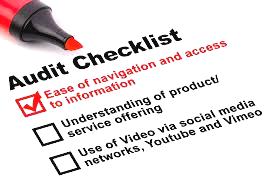SEO Audit Checklist: A Brief Overview

A Brief Overview
*You may visit our Dallas SEO, Austin SEO, Houston SEO, or San Antonio SEO pages for examples.
Search Audit
- Audit indexed pages
- Audit search for brand and branded terms
- Audit Google cache for key pages
Audit Content
- Home page
- landing pages
- SEO pages
- Proper keyword targeting, keyword map, site architecture, etc.
- Keyword cannibalization (site architecture), mapping, etc. ^^^
- Proper formatting: H1’s, alt tags, etc.
- Engaging headings on blogs
- Content to Ads ratio
Duplicate Content Audit
- 1 URL for each piece of content (no duplicates)
- Search Google for duplicate content
- Sub-domain check
- Secure version check
- Other sites owned
Audit Accessibility
- Check robots.txt file
- turn off javascript, cookies, css (use web developer toolbar)
- Change agent to Googlebot and compare
- Check for 404 errors, etc.
Site Architecture
- Hierarchy of pages and structure
- landing pages for SEO
- quantity of category pages
- Pagination / faceted navigation
- Click to content ratio
- prioritize content
Technical Audit
- 301 redirects
- JavaScript usage
- iFrames
- Flash issues
- Speed of website
- alt texts
- Google Webmaster Tools errors
- Sitemaps (HTML, XML, etc.)
Canonicalization Audit
- Canonical version of site established via 301
- GWT
- Rel tag
- Absolute URL’s vs. relative URL’s
Audit of URL’s
- Clean up the URL’s
- Short URL’s
- Descriptive URL’s
Audit Internal Linking
- Quantity of links on page
- Vertical links
- Horizontal links
- Links inside of content
- Footer links
- Internal anchor texts used
- Broken links – inbound and outbound
Title Tag Audit
- Unique title tags
- Keyword rich title tags
- Primary phrases in title tags
- Include branding
- ~65 to 70 characters
Meta Tag Audit
- Meta keywords tag (used vs. not used)
- Meta description
- Optimize key page descriptions
- Meta robots tag – noindex, etc.
